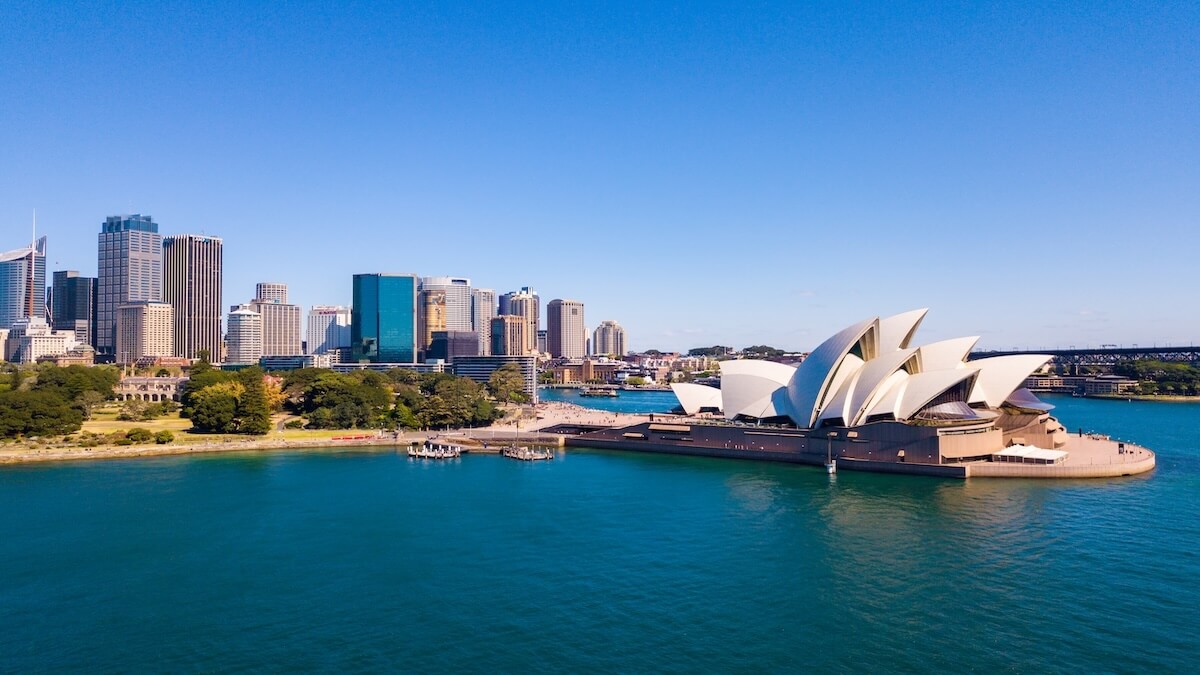How to get mortgage for overseas property as an American
Learn all about different ways to get an overseas property mortgage as an American and gain unique insights to prepare yourself for the whole process.

If you're an American investor eyeing Australia's property market, rental yield is one of the most important metrics for measuring potential returns. This percentage shows how much annual rental income you can expect compared to your property's value.
As of 2025, Australia's 5-year average rental yield sits at 3.56%, which is pretty solid.¹ However, some locations and property types offer better yields than others. Here's everything you need to know.
| Send money internationally with Wise to 140+ countries and 40+ currencies – all at the fair mid-market exchange rate with low, transparent fees. |
|---|
| Table of contents |
|---|
Rental yield measures the annual income your investment property generates as a percentage of its total value. There are 2 types of rental yield:
- Gross rental yield gives you the big picture by dividing your annual rent by the property's value. This calculation helps you quickly compare different properties, but it doesn't account for the real costs of property ownership
- Net rental yield gives you a more accurate picture of your ROI because it subtracts operating expenses, such as property management fees, insurance, and maintenance
Property investors benefit from looking at both figures. Gross yield helps you spot promising opportunities during your initial property search. Then, you can calculate the net rental yield to understand what you'll pocket after covering all expenses.
At the same time, rental yield is just one piece of the puzzle. A property with a modest rental yield can still be a great long-term investment if you expect it to appreciate a lot in the future.
Yes, it can be a smart choice for American investors. The country has low vacancy rates and strong demand for rentals, which means that your property is more likely to stay occupied.
| Recent data shows that national rent values rose 1.7% in Q1 of 2025, up from the 0.4% rise in Q4 of 2024.¹ This means that rentals are less affordable, but they're likely to generate higher yields. |
|---|
In addition to the demand, Australia is a politically stable country with a strong economy. Its population also keeps growing because of immigration and people moving to cities, which means more people need rental properties.
The main downside is distance. Managing a property from the other side of the world means you'll need good local help, like a property management company. Different time zones also make it harder to communicate with tenants or handle emergencies quickly.
Most American investors focus on Australia's major cities like Sydney, Melbourne, Brisbane, and Adelaide when building their property portfolios. However, smaller capitals and regional areas often deliver strong (or even stronger) rental yields, too.
Here's what to expect.
| City¹ | All dwellings | Houses | Units |
|---|---|---|---|
| Darwin | 6.6% | 6.0% | 7.8% |
| Hobart | 4.4% | 4.3% | 5.0% |
| Perth | 4.3% | 4.2% | 5.7% |
| Canberra | 4.1% | 3.8% | 5.2% |
| Melbourne | 3.7% | 3.2% | 4.8% |
| Brisbane | 3.7% | 3.5% | 4.5% |
| Adelaide | 3.7% | 3.5% | 4.7% |
| Sydney | 3.1% | 2.7% | 4.1% |
The data shows that the best rental yield in Australia comes from Darwin, where investors can get returns of 6.6% overall and up to 7.8% for units.¹ Smaller capitals like Hobart and Perth also tend to outperform the major eastern cities.
Average rental yield: 6.6%
Houses: 6.0%
Units: 7.8%
Darwin offers some of the best rental yields in Australia, with units delivering returns approaching 8%. The Northern Territory's resource-driven economy supports high rental rates, though the market can be more volatile than other locations.
Average rental yield: 4.4%
Houses: 4.3%
Units: 5.0%
Hobart provides solid rental yields with a relatively modest difference between houses and units. It can also be a more affordable entry point into Australian property investment.
Average rental yield: 4.3%
Houses: 4.2%
Units: 5.7%
Perth delivers some of Australia's strongest rental yields among major capitals, with units generally offering higher yields than houses. The city has a consistent demand from well-paid professionals, so your property is unlikely to sit unoccupied.
Average rental yield: 4.1%
Houses: 3.8%
Units: 5.2%
Canberra has strong rental yields because of the stable demand from government employees and university students. Units outperform houses for yield, and there's lower volatility in the Australian capital than in other parts of the country.
Average rental yield: 3.7%
Houses: 3.2%
Units: 4.8%
Melbourne has strong tenant demand because the city's population is growing with immigrants and international students. Consider purchasing an apartment unit instead of a house because units tend to generate more income.
Average rental yield: 3.7%
Houses: 3.5%
Units: 4.5%
Brisbane is one of Australia's fastest-growing cities, and the gap between house and unit yields is smaller than in other locations, which gives you more flexibility.
Average rental yield: 3.7%
Houses: 3.5%
Units: 4.7%
Adelaide matches Brisbane and Melbourne for overall rental yields, but you may be able to find more affordable properties. The city has a stable economy and growing population, which helps boost rental demand.
Average rental yield: 3.1%
Houses: 2.7%
Units: 4.1%
Sydney is Australia's largest rental market with consistent demand from students, professionals, and visitors, but the rental yields are among the lowest nationally. However, the city compensates for that with strong capital growth potential and minimal vacancy risk.
A good rental yield in Australia typically falls between 4% and 6%, but it ultimately depends on your property type and location. Generally speaking, apartment units have better ROI than houses.
| Recent data shows that Australia's gross rental yield continues to rise. The national rate hit 3.74% in March 2025, the highest it's been since 2019, as rents are growing faster than property prices.¹ |
|---|
Australia offers several advantages to property investors:
- More people moving to Australia means more renters looking for homes, which keeps the demand strong in major cities
- Not enough new homes are being built, compared to how many people need them, so rents keep going up, and properties don't sit empty
- Australia has a stable government and clear property laws that make buying safer
- Adding Australian property to your portfolio helps spread your investment risk across different countries and currencies
- Rents are rising faster than home prices in many areas, which means better returns for landlords
That said, you'll likely need to find a good property management company because it can be difficult to handle your property from overseas. This will eat into your profits, but it's always a necessity if you don't live in Australia.
Australia offers solid rental returns with a national average yield of 3.74% in 2025. The 5-year average is 3.56%, and yields continue to rise.¹
However, as an investor, you should consider factors beyond just rental income. Long-term appreciation and how you're going to manage your property from abroad are also important to think about.
One hidden cost that many property investors forget about is transferring money from the US to Australia.
Banks often charge poor exchange rates that can cost you 3% to 4% of your transfer amount on top of regular fees. This can cost you thousands of dollars on a large transfer.
With Wise, you can send secure and trackable large amount transfers to 140+ countries worldwide with transparent fees and the fair mid-market exchange rate.
Have a look at the main benefits for using Wise to send large transfers:
Sources
*Please see terms of use and product availability for your region or visit Wise fees and pricing for the most up to date pricing and fee information.
This publication is provided for general information purposes and does not constitute legal, tax or other professional advice from Wise Payments Limited or its subsidiaries and its affiliates, and it is not intended as a substitute for obtaining advice from a financial advisor or any other professional.
We make no representations, warranties or guarantees, whether expressed or implied, that the content in the publication is accurate, complete or up to date.

Learn all about different ways to get an overseas property mortgage as an American and gain unique insights to prepare yourself for the whole process.

Get a full overview of the best property management software systems for small landlords to easily track and manage their overseas property.

How to buy your first rental property overseas? Here's a detailed guide that can help you understand the challenges and steps for making an investment.

What are the best property management software systems for managing student housing? Take a look at our list and choose the most suitable option for you.

Are you thinking about making smart property investment decisions and wondering how rental yield is calculated? Have a look at our guide to find out.

Have a look at the in-depth guide on the Singapore rental yield market and get a detailed breakdown of opportunities in different areas within the country.